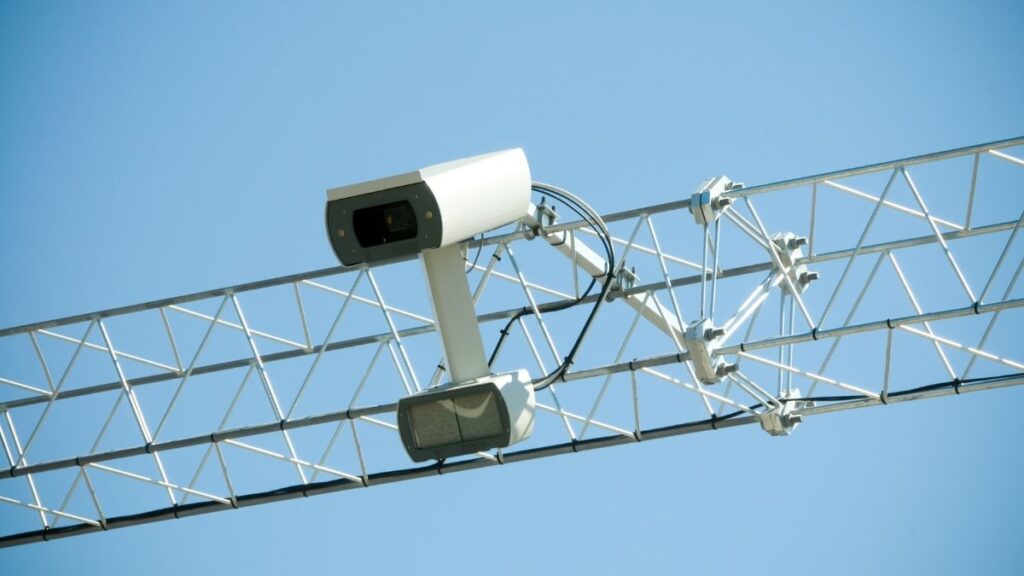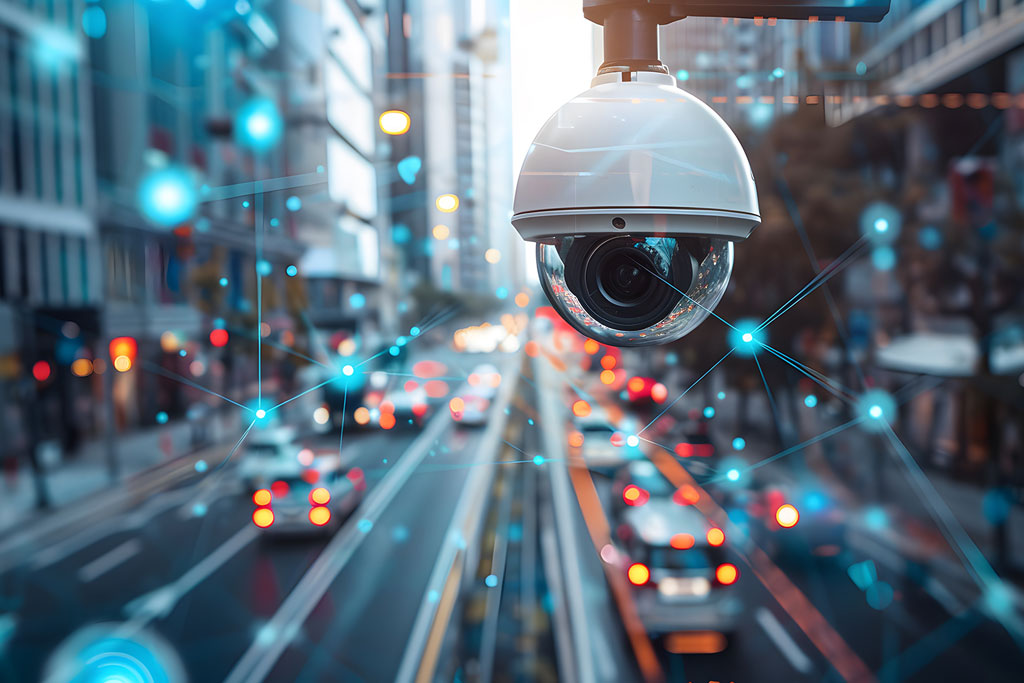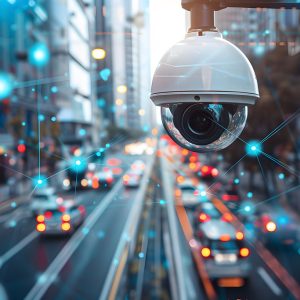UAE installs AI smart cameras for traffic rule enforcement, marking a groundbreaking step in its journey toward safer, more disciplined, and technology-driven roads. The move reflects the country’s commitment to combining innovation with safety, as advanced artificial intelligence systems begin monitoring vehicles to detect violations with unmatched precision and fairness. This initiative represents a major leap forward in the UAE’s Smart Mobility Vision, where technology enhances every aspect of public life—from transport systems to policing. By implementing AI-powered surveillance, the government aims not only to reduce accidents but also to promote a culture of compliance and accountability among drivers.
UAE Installs AI Smart Cameras for Traffic: A New Era of Smart Road Monitoring
The installation of AI smart cameras across the UAE’s highways, intersections, and urban streets is a key milestone in transforming road safety standards. These next-generation systems are designed to detect and record a range of traffic violations, including speeding, running red lights, illegal turns, seatbelt non-compliance, and mobile phone use while driving. Unlike traditional cameras, these AI systems use machine learning algorithms to analyze vehicle movement in real-time. They can recognize number plates, identify vehicle types, and even detect erratic or dangerous behavior that may lead to accidents. This allows authorities to take prompt action, preventing potential hazards before they escalate into serious incidents. The initiative reflects the UAE’s dedication to creating intelligent urban environments where technology assists humans in building safer, more efficient communities.
AI Cameras: How the Technology Works
AI smart cameras are equipped with advanced sensors, radar systems, and deep-learning software that continuously process video feeds. These cameras don’t just record images—they interpret them. The system can automatically flag violations, track repeated offenders, and send data directly to the central traffic control unit. Artificial intelligence enables the cameras to “learn” from patterns, improving their accuracy over time. For example, they can distinguish between a car accelerating momentarily and a vehicle consistently exceeding the speed limit. The technology also compensates for lighting changes, weather conditions, and vehicle density to ensure accuracy under all circumstances. These capabilities reduce the possibility of human error, ensuring fair and objective enforcement. The result is a traffic monitoring system that works around the clock, maintaining high efficiency and transparency.


Promoting Safer Roads and Responsible Driving
The introduction of AI smart cameras aims to make drivers more conscious of their actions. Knowing that intelligent systems are continuously monitoring the roads encourages motorists to adhere strictly to traffic rules. This awareness can drastically reduce the number of violations and, more importantly, prevent accidents caused by negligence or reckless driving. Statistics from global studies show that visible enforcement technologies lead to a measurable decline in unsafe driving behaviors. The UAE’s decision to adopt AI-based surveillance reflects its commitment to proactive safety rather than reactive punishment. The ultimate goal is to protect lives, promote order, and make every journey safe for drivers, passengers, and pedestrians alike.
Supporting the UAE Vision for Smart Cities
The deployment of AI cameras is part of a broader national vision to transform the UAE into one of the world’s smartest and safest countries. This aligns perfectly with the government’s long-term goals under its Smart City and Artificial Intelligence strategies. By integrating advanced monitoring technology into its transport network, the UAE is setting global benchmarks in urban innovation. Smart cameras communicate with central data systems, allowing traffic authorities to analyze road conditions, congestion patterns, and violation trends in real time. This information helps improve city planning, optimize traffic flow, and enhance emergency response times. In the long run, it contributes to building sustainable, connected cities where technology and human behavior coexist harmoniously.

Reducing Accidents and Saving Lives
Road safety has always been a top priority in the UAE, where authorities continuously introduce measures to protect residents and visitors. The introduction of AI smart cameras adds another strong layer of protection to this mission. These cameras are not merely enforcement tools—they are safety instruments designed to prevent accidents before they occur. By identifying risky behaviors early, such as tailgating, lane drifting, or distracted driving, the system helps create early intervention opportunities. Authorities can issue warnings, enforce penalties, or launch awareness campaigns based on real-time data gathered by the cameras. This proactive approach has the potential to significantly lower accident rates and road fatalities, supporting the UAE’s national goal of achieving world-class road safety standards.
Advanced Detection Capabilities for Modern Roads
The AI smart cameras in the UAE are capable of handling complex traffic scenarios that traditional systems could not. They can analyze multiple lanes simultaneously, detect vehicles violating lane rules, or crossing pedestrian paths improperly. Some models even have infrared and night-vision capabilities, allowing 24-hour monitoring without loss of accuracy. They can detect seatbelt violations inside moving cars, identify distracted drivers using mobile phones, and spot vehicles driving in bus or emergency lanes. The precision of these cameras makes them powerful tools for maintaining road discipline while minimizing false penalties. As AI models continue to evolve, their ability to detect nuanced behaviors—like sudden swerving or unsafe merging—will make them even more valuable to law enforcement agencies.
Integration with National Traffic Systems
The UAE’s AI camera initiative is not an isolated effort; it is integrated into a unified national traffic control system. Data collected from smart cameras feeds into central command centers, where authorities can monitor live traffic conditions across the Emirates. This integration supports predictive analytics, enabling the system to identify potential problem areas before congestion or accidents occur. For instance, if several speeding incidents are recorded in a particular zone, authorities can take immediate corrective actions, such as adjusting signal timings or increasing patrol presence. In the future, these AI systems could connect directly with vehicle telematics, navigation apps, and smart city dashboards—creating a seamless ecosystem of intelligent mobility management.
A Fair and Transparent Enforcement System
One of the strongest advantages of AI-based traffic monitoring is its impartiality. Cameras operate purely on data and algorithms, ensuring that all drivers are treated equally. Unlike manual enforcement, which may involve human discretion, AI systems issue penalties based solely on objective evidence. This transparency strengthens public trust in traffic enforcement and ensures that penalties are justified. Drivers can also review violations through digital portals, making the process more open and accountable. The UAE’s adoption of such fair technology demonstrates its commitment to justice and equality under the law—values that are as central to governance as innovation itself.
Encouraging Data-Driven Decision Making
AI cameras not only enforce rules but also generate invaluable data for future planning. The information collected helps authorities understand driver behavior, traffic density, and the most common types of violations. This data-driven approach allows policymakers to design more targeted awareness campaigns, improve road infrastructure, and allocate resources efficiently. For example, if data reveals frequent mobile phone usage violations in specific zones, authorities can deploy extra signage or road safety units there. By combining AI insights with human decision-making, the UAE ensures that its road safety policies evolve continuously based on real evidence.

Public Awareness and Education
Technology alone cannot ensure safety—public cooperation and awareness play an equally important role. To complement the AI camera rollout, the UAE is launching awareness programs to educate drivers about the importance of responsible behavior and the role of AI in monitoring compliance. These initiatives aim to foster respect for laws not out of fear of fines, but out of understanding of their purpose—to save lives. Schools, universities, and workplaces are expected to participate in campaigns promoting safe driving, responsible phone use, and respect for pedestrians. By combining enforcement with education, the UAE is cultivating a road culture that is smart, disciplined, and conscious of its shared responsibilities.
Challenges and Future Enhancements
While AI smart cameras are highly advanced, their effectiveness depends on continuous innovation and public cooperation. Technical challenges such as maintaining system accuracy, managing data privacy, and ensuring consistent connectivity require ongoing attention. Authorities are already working on expanding the AI camera network to more regions, integrating it with drone surveillance, and linking it to smart traffic lights. In the future, AI-powered systems may even interact directly with autonomous vehicles, providing real-time guidance and incident alerts. Such integration will ensure that UAE roads remain at the cutting edge of global safety and efficiency standards.
A Global Model for Smart Traffic Management
The UAE’s bold investment in AI technology positions it as a global leader in intelligent transport systems. Other nations are closely observing this model to understand how artificial intelligence can enhance enforcement, reduce accidents, and optimize city mobility. By implementing advanced surveillance systems early, the UAE showcases its readiness for the future of transportation—one where technology, responsibility, and safety converge to shape modern living.
Conclusion: The Future of Driving is Smart and Safe
The decision to install AI smart cameras for traffic rule enforcement marks a transformative chapter in the UAE’s journey toward intelligent mobility. It reflects a vision where every road is safe, every driver is accountable, and every system works seamlessly through the power of technology. The UAE’s forward-thinking approach demonstrates that the future of transportation is not just about faster cars or wider roads—it’s about smarter systems, safer journeys, and a shared responsibility for every life on the road. As AI continues to evolve, these smart cameras will become the cornerstone of safer, more efficient cities, helping the UAE drive confidently toward a future where innovation meets humanity.
Do follow UAE Stories on Instagram
Read Next – Virtus CSI2 Returns to Dubai for Fourth Edition*














